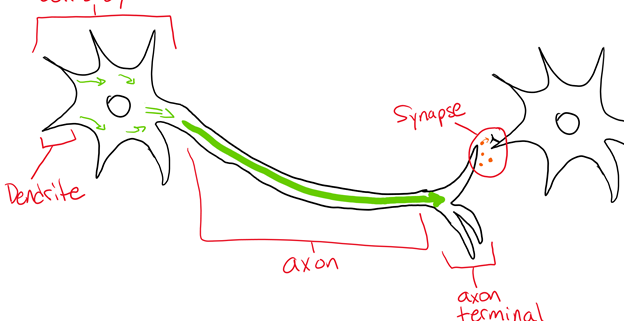A Quick Lesson in Neuroscience
As I sit here wracking my brain for something fun and creative to write about for this blog post, I finally decide that today is a good day for a short lesson in neuroscience!
I won’t bore you with the nitty gritty of all the specifics but will give a general everyday overview. According to Merriam-Webster’s dictionary, neuroscience is defined as “a branch of the life sciences that deals with the anatomy, physiology, biochemistry, or molecular biology of nerves and nervous tissue and especially with their relation to behavior and learning” (https://www.merriam-webster.com/dictionary/neuroscience). When thinking about our nervous system, it can be looked at in two separate sections – the central nervous system (CNS) consisting of the brain and spinal cord, and the peripheral nervous system (PNS) consisting of all the nervous not a part of the brain and spinal cord. These two systems interact back and forth to send signals from the brain to body (ex: movement) and from the body to the brain (ex: senses) via specific cells called neurons. The neuron can be broken down into three parts – the cell body or soma, axon, and axon terminal. The cell body has dendrites coming off it that accept incoming signals from the previous neuron. This signal (which is an electrical signal, but I won’t get into that today) travels down through the cell body to the beginning of the axon called the axon terminal. Small incoming signals from the dendrites add up at the axon terminal to trigger the continuation of sending the message down the axon. With a strong enough sum of inputs, the signal is sent down the axon by the movement of charged particles in and out of the cell. In other words, imagine you are enjoying an icy pop on a hot day, and you squeeze the last bit of juice from the bottom of the tube with your pointer and thumb fingers up to your mouth – the juice is the signal, and your fingers represent the movement of charged particles to get that signal to the end. Once the signal hits the axon terminals, it releases neurotransmitters, or a signaling molecule, to release into the space where it will diffuse out into the synapse, or the area between two neurons. Here the neurotransmitter will bind to a receptor on the dendrite on the next axon that will carry the signal.
Hopefully you learned something interesting. Want to dive deeper, I’m always happy to chat about Neuroscience, which is a huge passion and interest of mine.
-Christina Lavin, Research Analyst









